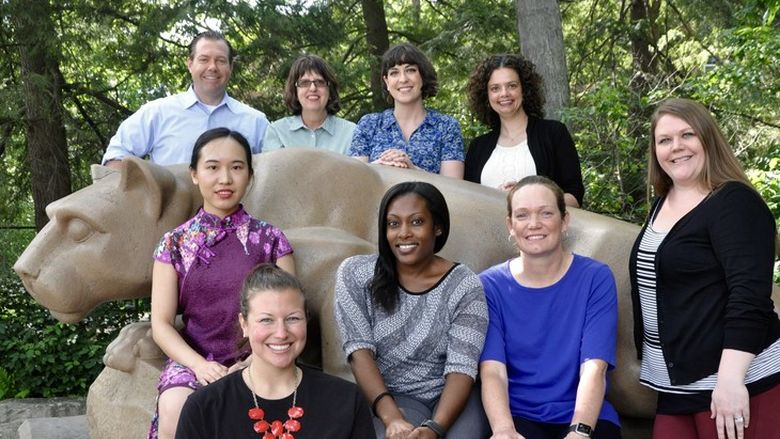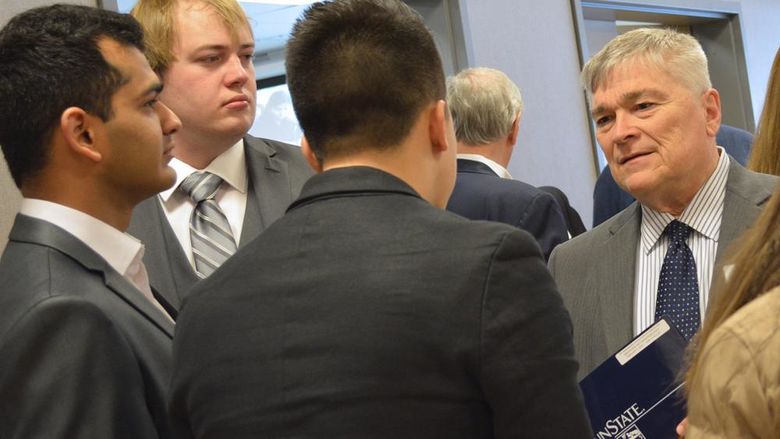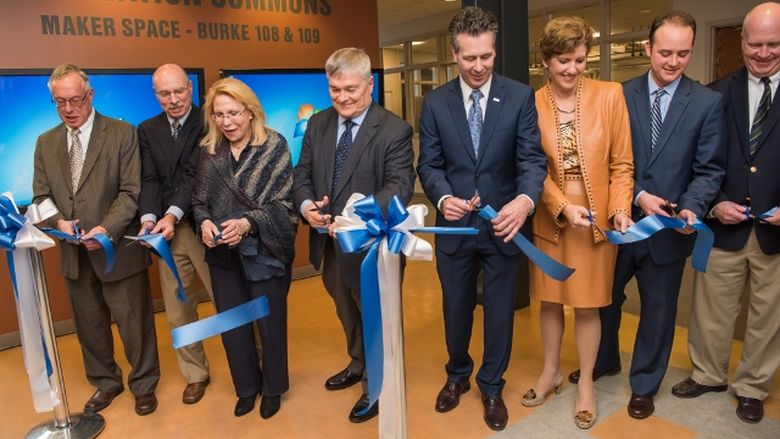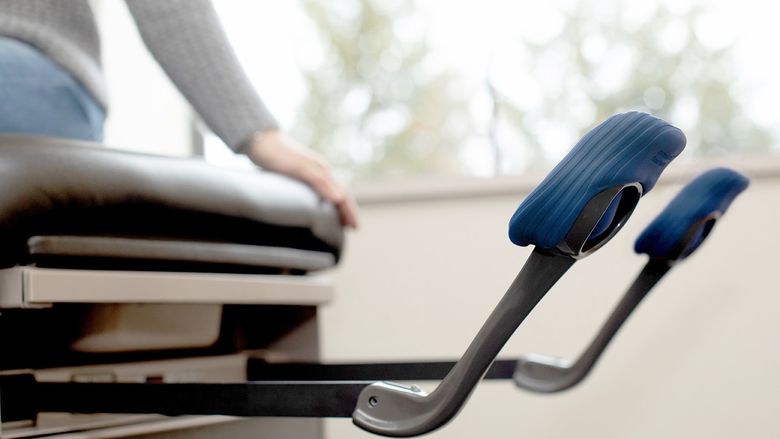Wes Hall, a 2017 graduate of Penn State Behrend, developed the Lace-N-Lock device, which allows people with mobility issues to tighten their shoes without having to bend down and actually touch the laces.
ERIE, Pa. — Wes Hall entered the job market with something better than a resume: He had his name on a utility patent and an ownership stake in a product that will soon be tested in four states.
Hall, a 2017 graduate of Penn State Erie, The Behrend College, developed the Lace-N-Lock device, which allows people with mobility issues to tighten their shoes without having to bend down and actually touch the laces. He built at least 15 iterations of it, working in Penn State Behrend’s Innovation Commons idea lab.
“We started with just a rudimentary sketch — two pill bottle caps with a lace threaded between them,” Hall said. “That’s what drew me to the project. It was a rare opportunity to invent something from start to finish.”
The idea came from Hank Graygo, president of LNZ Products and HFGRAYGO Engineering in Erie. Graygo's wife, Betty, was having trouble tying her shoes as she recovered from hip surgery. “Why don’t you invent something?” she asked him.
Graygo took his sketch to his friend Ed Evans, now the interim director of Penn State Behrend’s School of Engineering. Evans suggested they offer it to students as a sponsored senior-design project.
Hall convinced two friends to help him. Using 3D modeling, they produced a rough prototype: a disc-shaped plastic mechanism that could be turned with a key fitted onto a long handle, or a cane.
“It was way too big,” Hall said of the prototype, which used 2-inch PVC pipe. “It looked ridiculous, but it showed us that it would work.”
Hall, who grew up in the South Park section of Pittsburgh, kept trying. He took over a corner of the Innovation Commons lab, a high-tech maker space equipped with 3D printers, a laser cutter and a 360-degree, 90-camera scanner. There, he met the developer of the BoXZY, a desktop 3D printer, laser engraver and CNC mill.
“We hit it off,” he said. “We were in here, printing stuff, until 4:30 in the morning.”
The developer agreed to leave some of his machines in the lab so students could experiment with them. Hall was back in Innovation Commons that afternoon.
The lab is the first of five planned “innovation beehives” that will form a unique business support network in Erie County. It was funded by the Invent Penn State initiative, which blends entrepreneurship-focused academic programs, business start-up training and funding for commercialization, and the Ignite Erie Industry+University Business Acceleration Collaborative, a three-year, $1.5 million partnership of Penn State Behrend, Mercyhurst University and the Erie County Gaming Revenue Authority.
Student workers provide free product design and rapid prototyping to entrepreneurs and start-up companies. They’ve done 3D printing, CAD work and design prototyping for more than 50 business projects, including Lace-N-Lock.
“Our projects are driven by the motivation of the entrepreneur,” said Jacob Marsh, industry relations coordinator at Penn State Behrend. “Hank Graygo knew he had something with Lace-N-Lock, and he was just tenacious. He went everywhere, asking what services were available, and he didn’t stop until he found a deal that worked.”
He got it at Port Erie Plastics. The company agreed to make the initial production mold, and to manufacture the first 200 Lace-N-Lock units.
The device is fairly simple: a spring, cap and spindle in a small round case, held in place with a single screw. “The cuff of your pants falls right over it,” said Hall, who earned a degree in interdisciplinary business with engineering studies at Penn State Behrend and now works for Truck-Lite, which manufactures LED safety lighting, wiring harnesses and turn-signal switches for a wide range of vehicles. “You can’t even tell you’re wearing it.”
Graygo hopes to market-test the product later this year, targeting occupational and physical therapy practices in Pennsylvania, New York, Ohio and West Virginia. He expects the device to sell for between $35 and $45.
Hall, a co-owner of the technology, sees a broader market for Lace-N-Lock: senior citizens, children with developmental issues, women in the late stages of pregnancy, even people with broken hands or arms.
They can fit the device onto athletic shoes they already own.
“You can buy therapeutic shoes that close with Velcro straps,” he said, “but you still have to bend down to close them. And be honest: Do you really want to wear Velcro shoes if you don’t have to?”
Robb Frederick
Director of Strategic Communications, Penn State Behrend




